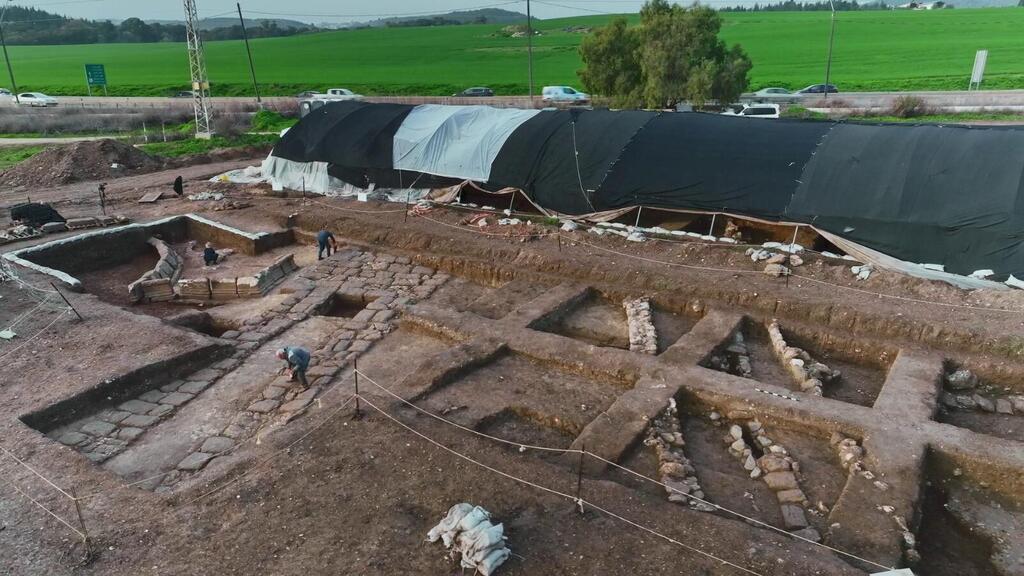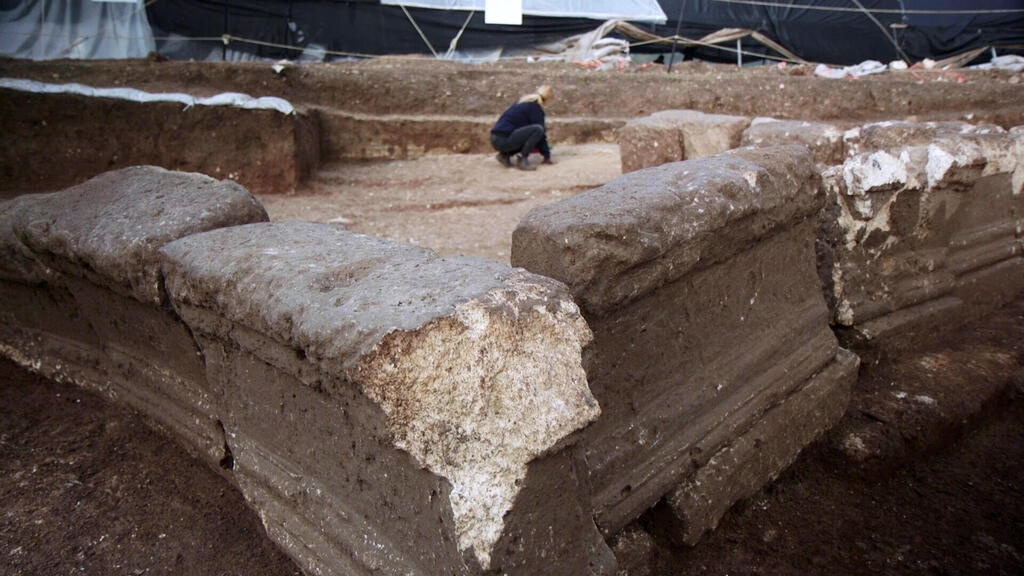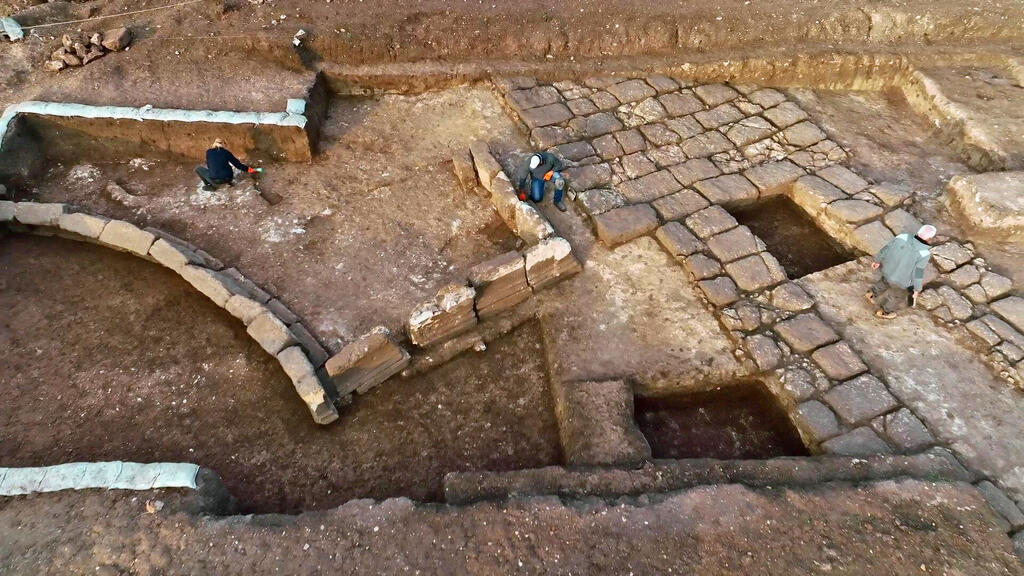The remains of the Roman Legion camp
(Video: Israel Antiquities Authority)
Remains of the Roman Legion's camp, known as Legio Iron (Legio VI Ferrata), dating back around 1,800 years, were uncovered in a dig conducted by the Israel Antiquities Authority at the foot of Tel Megiddo in northern Israel.
Read more:
Led by Dr. Yotam Tepper and Barak Zin and funded by the National Roads Company of Israel, the excavation is part of a project to revamp Highway 66. The excavation revealed impressive architectural remnants of the Via Principalis - the main street of the camp, alongside paved stone surfaces and a monumental podium in the shape of the Greek letter sigma, which were part of a large public structure.
The military camp of the Sixth Legion is the only known military camp in Israel, in terms of size and scope, whose location is known and has been exposed in archaeological excavations.
"The Roman Legion camp at Legio, serving as a permanent base for over 5,000 Roman soldiers for about 180 years - from 120-117 BCE until around 300 CE," said Dr. Tepper from the Israel Antiquities Authority.
"It measured approximately 550 meters in length and 350 meters in width. At the center of the camp, two main streets intersected, where the camp's headquarters courtyard was also established. This location in the camp served as a central reference point, from which distances were measured (marked with milestone stones) along the Roman roads, which branched out from the military camp to the major cities throughout northern Israel."
"The preservation of the site's remains is not evident from a great height, as many stones were taken from here over the years for use in other projects in settlements established in the area during the Byzantine period," he added.
Dr. Tepper emphasized that the discovery of the camp's center is not accidental; this excavation by the Antiquities Authority followed surveys conducted as part of geo-historical research, alongside six excavation seasons conducted in the past decade in collaboration with Dr. Matthew G. Adams, as part of the Jezreel Valley Regional Project (JVRP) under the auspices of the W. F. Albright Institute of Archaeological Research in Jerusalem.
"During these excavation seasons, the camp's headquarters (the Principia) was exposed in its upper part, southwest of Highway 66, and in the current excavation, conducted by the Antiquities Authority, we are uncovering the remains of the camp stretching from the northeast along Highway 66."
According to Dr. Tepper, historical sources and additional fragmented information attest to the existence of a permanent camp for the Roman Tenth Legion (Fretensis) in Jerusalem, yet it has not yet been located."
In the excavation, coins, fragments of weapons, pottery, and glass were also discovered, but the standout findings at the site are the roof tiles, found in very large quantities. "These roof tiles, some of which bear imprints of the Sixth Legion, served a variety of purposes - from roofing to flooring and wall covering. The technology, knowledge, construction methods, and weaponry brought by the legion were unique to the Roman army. This brought with it a wide variety of items from the homeland, forming a distinct Roman imperial military fingerprint," the researchers said.







